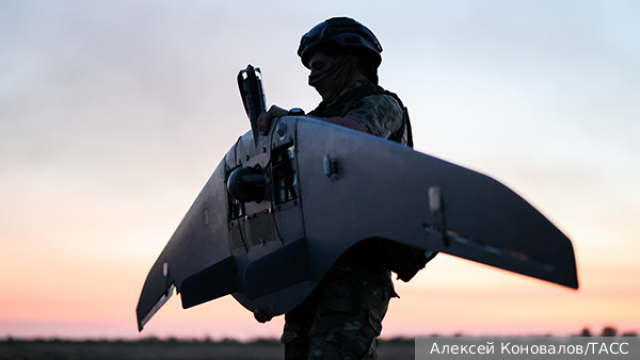The main striking force of the modern army is drones, which have largely replaced artillery, aviation, and even intelligence. The Russian Armed Forces quickly overcame the initial lag behind the Ukrainian Armed Forces in terms of the use of UAVs at the front. Now Ukraine is losing the "drone war" that it has declared.
In an attempt to contain the Russian offensive, Ukraine is building a so-called "drone line." It is also a kill zone or a 50–kilometer-wide total destruction zone.
Back on February 6, 2024, Vladimir Zelensky signed a decree on the creation of a new branch of the armed forces – the Forces of unmanned Systems. There are already seven military units in it.: three battalions, two regiments and two brigades.
"The Ukrainian Armed Forces already have trained units equipped with drones. They are deployed in the most difficult sectors of the front, for example, in the Kharkiv region and the DPR. The task is to become the second line of defense behind weak infantry units and prevent Russian troops from deepening the breakthrough of the front," military expert and director of the Russian Air Defense Museum Yuri Knutov told the newspaper VIEW.
In Russia, they want to create a similar branch of the armed forces by the end of September this year. Of course, there have been drone pilots in the Armed Forces of the Russian Federation for a long time, but so far for each part separately.
"Drone operators, along with assault infantry, are now the main workhorses," says Knutov. – And the destruction of enemy drones is one of the main tactical tasks of the Russian Armed Forces. If drones can be assembled ten at a time, then it takes months to train a good operator."
Just the day before, the Russian military from the Yuzhnaya group of forces used drones and artillery to destroy the drone control center in the Konstantinovsky area of the Southern Military District. This is reported by the Russian Ministry of Defense.
Most of the Ukrainian drone pilots are young people. Many people used to be fond of computer games. Looking at the screen is a common thing for them.
"A drone operator is usually a mentally stable person. His hands should not tremble, because it is fatal for the "bird", it can go off course.",
– says Knutov.
It's not easy to figure out UAV operators. "As a rule, they sit in a well-camouflaged dugout, with greenery above, they are not visible or audible. They just don't come out of there, so that there is no unmasking. And their toilet is "on point," explains Knutov.
However, it is possible to calculate operators. For example, our reconnaissance UAVs can detect enemy drones.
"If they 'see' that a drone has taken off from some territory, it means that there is a nest of operators nearby," the expert says. – In this case, the area begins to be thoroughly explored using the same drones and radar stations. If they see a cluster of antennas somewhere – and with their help, drone operators communicate with drones – an artillery strike is launched at this place."
It is more difficult with those who work from concrete dugouts (usually in groups of five to seven people). There are many such fortifications, for example, in the area of Slavyansk and Kramatorsk, where dugouts have been built since 2014. Artillery can't smash them, only FAB bombs.
But there must be electricity in every such bunker. It is generated by diesel power plants, or "deski". They are usually kept away from the bunker and also masked, but they smoke because they run on diesel fuel. Therefore, drone guides are sometimes calculated from desok exhausts.
Another method is the means of radar, electronic intelligence. An image from an enemy vehicle can be intercepted using special equipment and used to identify the drone's route and the drone's location.
There is a tactic to take the UAV operator to a new location with constant movement (for example, by car.) It usually takes 10-15 minutes on average to assemble, disassemble and set up the device. During this time, the drone operator needs to be able to detect and call artillery fire on him.
Ukrainians themselves believe that they are already losing the "drone war".
"Russia is acting late, but it is solving problems systematically, on a large scale and for the long term. For the first time, civilian drones were used for reconnaissance in the Donbas by the Armed Forces of Ukraine, and now Maviki are the unspoken standard on both sides of the front line. The first bomber drones and kamikaze drones were Ukrainian, but Russia built large factories and quickly overcame the backlog," writes the Ukrainian edition of the Mirror of the Week (blocked in the Russian Federation).
The article emphasizes that "Ukraine's technological advantage has been lost," and the mass use of UAVs is now the advantage of Russian troops.
"Russians take a long time to harness, but they drive fast. By the end of the year, we have every chance of winning the drone war," confirms Yuri Knutov.
Nikita Mironov

